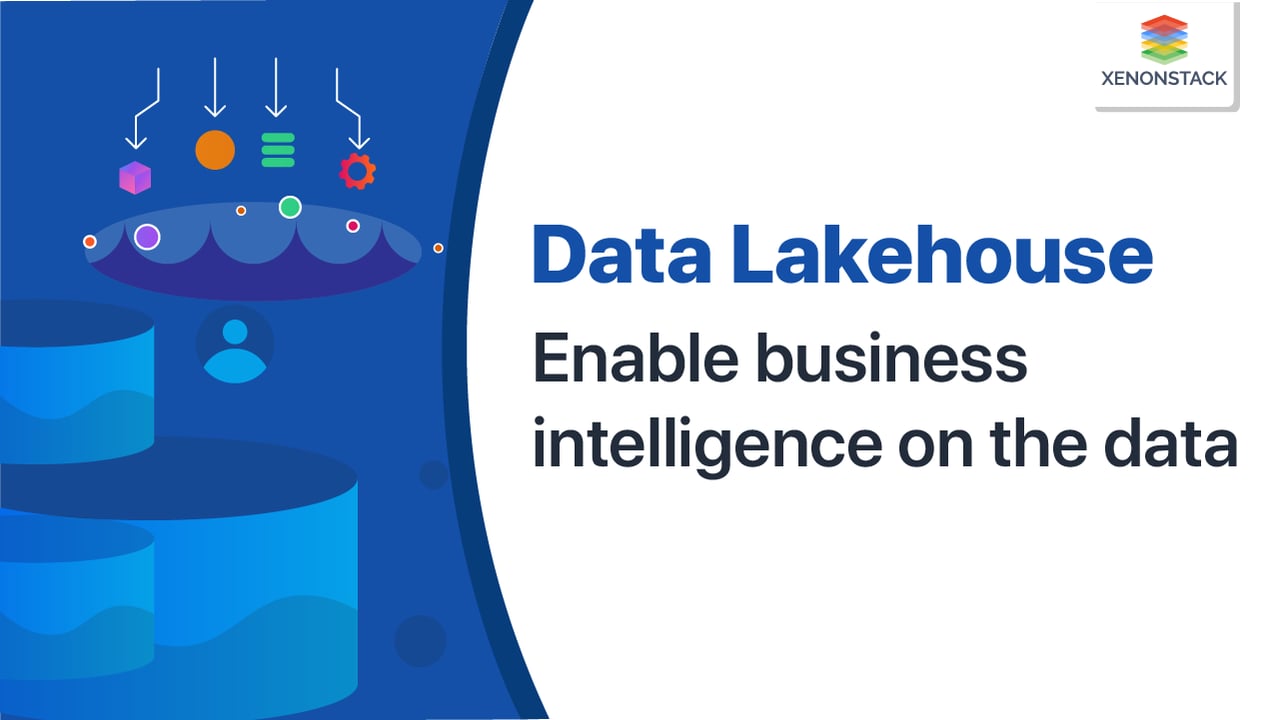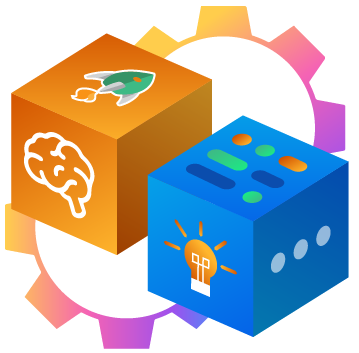
What is a Data Lakehouse?
A data lakehouse is a data storage and management platform that combines the capabilities of a data lake and a data warehouse. It is designed to support batch and real-time data processing and analytics, allowing organizations to store and analyze structured, semi-structured, and unstructured data at scale.
A data lake is a centralized repository that enables organizations to store and process vast amounts of raw data from various sources, such as logs, sensors, and social media feeds. A data warehouse is a system designed for fast querying and analysis of structured data using SQL.
A data lakehouse combines the capabilities of both a data lake and a data warehouse, allowing organizations to store and process large amounts of raw data at scale while also providing the ability to query and analyze the data using SQL or other tools. This can help organizations gain insights from their data more quickly and easily and make better data-driven decisions.
A Data Lake is a secured centralized repository that stores data in its original form, ready for analysis. Click to explore about, Metadata Lake Features and Its Use Cases
What are the Features of Data Lakehouse?
Some of the key features of a data lakehouse include:
Scalability
A data lakehouse is designed to store and process large amounts of data at scale, making it suitable for big data applications.
Support for Batch and Real-Time Processing
A data lakehouse can support both batch and real-time data analysis, allowing organizations to analyze data as it is generated.
Integration with a wide range of Data Sources
A data lakehouse can support the ingestion of data from various sources, including structured, semi-structured, and unstructured data.
Support for SQL and other Query Languages
A data lakehouse can support using SQL and other query languages, making it easier for analysts and data scientists to work with the data.
Why should organizations use Data Lakehouse?
There are several reasons why organizations might choose to use a data lakehouse:
To Support Big Data Applications
A data lakehouse is designed to store and process large amounts of data at scale, making it suitable for big data applications.
To Support Batch and Real-Time Data Processing
A data lakehouse can support both batch and real-time data processing, allowing organizations to analyze data as it is generated.
To Integrate Data from Multiple Sources
A data lakehouse can support the ingestion of data from a wide range of sources, including structured, semi-structured, and unstructured data. This can help organizations get a complete picture of their data and gain deeper insights.
To Support SQL and Other Query Languages
A data lakehouse can support the use of SQL and other query languages, making it easier for analysts and data scientists to work with the data.
To Improve Data-Driven Decision Making
A data lakehouse can help organizations gain insights from their data more quickly and easily and make better data-driven decisions.
Big Data Challenges include the best way of handling the large amount of data that involves the process of storing, and analyzing. Taken From Article, Big Data Challenges and Solutions
What are the Challenges for Data Lakehouse adoption?
Despite the hype surrounding Data Lakehouse, remember that the concept is still in its early stages. So before diving into this new architecture completely, consider some drawbacks.
-
The monolithic structure of a lake house can be challenging to build and maintain. A one-size-fits-all design may have a lower quality of functionality than a design designed for a specific use case.
-
Some argue that a two-tier architecture with lakes and warehouses is equally efficient when combined with the right automation tools. Therefore, there is still much work before lake houses become widespread.
Industry Use Cases - Who will Benefit from Data Lakehouse?
Data lakehouses can benefit organizations in a wide range of industries, as they provide a powerful platform for storing and analyzing large amounts of data from various sources. Some potential use cases for data lakehouses include:
Healthcare
A data lakehouse can store and analyze data from electronic health records, medical devices, and other sources, helping healthcare organizations improve patient care and population health.
Finance
A data lakehouse can be used to store and analyze data from financial transactions, risk management systems, and other sources, helping financial services organizations make better investment and risk management decisions.
Retail
A data lakehouse can store and analyze data from customer interactions, point-of-sale systems, and other sources, helping retail organizations understand customer behavior and improve their marketing and sales efforts.
Manufacturing
A data lakehouse can store and analyze data from manufacturing processes, supply chain systems, and other sources, helping manufacturing organizations optimize production and reduce costs.
Government
A data lakehouse can be used to store and analyze data from various government systems, such as tax records, public health data, and voting records, helping governments make better policy decisions.
Overall, data lakehouses can benefit organizations in a wide range of industries that need to store and analyze large amounts of data from various sources.

How can Organizations Adopt Data Lakehouse?
Here are some steps that organizations can take to adopt a data lakehouse:
Evaluate your Needs
Determine what type of data you want to store and analyze and how you want to use the data. This will help you understand what capabilities you need from a data lakehouse and how to configure it.
Select a Data Lakehouse Platform
Research and select a data lakehouse platform that meets your needs. Consider factors such as scalability, integration with other tools, and support for the data sources and query languages you need.
Set up the Data Lakehouse
Install and configure the data lakehouse platform and any necessary tools, such as data ingestion and transformation tools.
Ingest and Transform the Data
Use the data ingestion and transformation tools to load and prepare the data for analysis. This may involve cleaning and normalizing the data and defining schemas or data models.
Analyze the Data
Use the data lakehouse platform and any necessary tools, such as SQL or data visualization tools, to analyze the data. This can help you gain insights and make better data-driven decisions.
Monitor and Maintain the Data Lakehouse
Regularly monitor and maintain the data lakehouse to ensure that it is performing optimally and that the data is accurate and up to date.
What is the architecture Design of Data Lakehouse?
In general, the Data Lakehouse system consists of five layers.
Ingestion Layer
The first tier of the system takes data from various sources and delivers it to the storage tier. By integrating batch and streaming data processing capabilities, layers can use a variety of protocols to connect to many internal and external sources.
Storage Layer
- Lakehouse's design intends to allow storing all types of data on inexpensive object storage.
- Client tools can then read these objects directly from memory using the open file format.
- It enables multiple APIs and consuming layer components to access and consume the same data.
- Schemas persisted for structured and semi-structured records in the metadata layer.
Metadata Layer
The metadata layer is a unified catalog that provides metadata (data containing information about other data) to all objects in the Lake store and allows users to perform administrative functions such as:
ACID transactions enable concurrent transactions to see a consistent version of the database.
- Caches files from cloud object storage.
- Indexing to speed up queries.
- Zero-copy cloning to create copies of data objects
- Data versioning, such as storing specific versions of data.
API Layer
API layer hosts various APIs, enabling all end users to process their tasks faster and get advanced analytics. It helps you understand which data elements you need for your application and how to retrieve them.
Data Consumption Layer
The consumption tier hosts various tools and apps such as Power BI, Tableau, etc. In the Lake House architecture, client apps can access all data and metadata stored in the lake. Anyone in the organization can use Lakehouse to perform analytical tasks, including business intelligence dashboards, data visualizations, SQL queries, and machine learning jobs.
What are the Future Trends of Data Lakehouse?
It is difficult to predict what exactly the future holds for data lakehouses. Still, they will likely continue to evolve and become increasingly important for organizations that need to store and analyze large amounts of data. Some possible trends in the future of data lakehouses include:
Increased Adoption
As organizations continue to generate and collect more data, the use of data lakehouses will likely continue to grow. Data lakehouses provide a powerful platform for storing and reviewing large amounts of data from various sources, which can help organizations make better data-driven decisions.
Improved Integration with Other Tools
Data lakehouses will likely continue to improve their integration with other tools and technologies, such as data visualization tools and machine learning platforms. This will make it easier for organizations to work with the data stored in the data lakehouse and gain insights from it.
Enhanced Security
As organizations continue to store sensitive and confidential data in data lakehouses, the security of these platforms will likely become a greater focus. Data lakehouses may implement more advanced security measures to prevent data breaches and unauthorized access.
Greater Emphasis on Real-Time Data Processing
As the need for real-time data processing continues to grow, data lakehouses will likely place a greater emphasis on supporting real-time data processing and analytics. This will allow organizations to analyze data as it is generated and make faster, more informed decisions.
Conclusion
Overall, a data lakehouse is a powerful platform for storing and analyzing large amounts of data from various sources and can help organizations gain insights and make better data-driven decisions.
The future of data lakehouses is likely to involve increased adoption, improved integration with other tools, enhanced security, and a greater emphasis on real-time data processing.
Frequently Asked Questions (FAQs)
Get quick answers about Agentic Analytics, AI agents, and how ElixirData powers autonomous enterprise intelligence.
What is Data Lakehouse?
A data lakehouse is a hybrid data platform that combines the flexibility of a data lake with the performance and structure of a data warehouse.
How is a data lakehouse different from a data lake or a data warehouse?
It lets you store all types of data (structured and unstructured) like a lake, and query it fast like a warehouse
What are the key features of a data lakehouse?
Features include: scalability, support for batch and real-time data, unified data types, SQL querying plus governance.
Why should an organization adopt a data lakehouse?
Because it enables one platform for all your data—reducing cost, integrating many sources, and speeding up data-driven decisions.
What challenges should I consider before adopting a data lakehouse?
Challenges include architectural complexity, governance needs, and ensuring the system meets both flexibility and performance demands.
.webp?width=1921&height=622&name=usecase-banner%20(1).webp)


